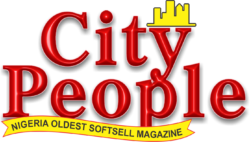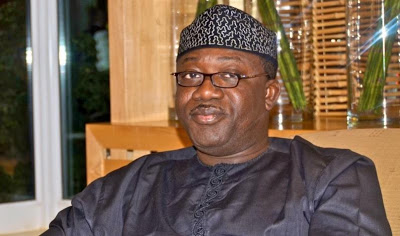Minister, KAYODE FAYEMI Reveals His Achievements
Consistently in 2017, the Mining sector featured in the story of our journey to economic recovery and consolidation. For example, in reporting the GDP figures for second quarter 2017, the Nigerian Bureau of Statistics indicated that the economy grew by 0.55%, largely attributed to improved performance of not only the Oil and Gas sector but other economic activities like Mining.
The Mining sector grew by 2.24% in that quarter. Consolidating on our feat of achieving a 300% increase in revenue (royalties and fees) between 2015 and 2016, we steadily progressed in 2017, and as at November of this year, the sector had already surpassed the entire revenue of about N2Billion generated for the whole of 2016, with over N3.5 Billion contributed to the federation account so far.While we still have a long way to go, with the gains we have collectively achieved in 2017, we can confidently say that we are well ‘On the Road to Shared Mining Prosperity’ in Nigeria. Some of our key achievements in 2017 are as follows:
IMPROVED SECTOR GOVERNANCE
The institutional capacities of the ministry and its agencies have been strengthened to effectively regulate the sector, with a particular focus on mines safety and security, and tackling the menace of illegal mining. The law providing for the establishment of Mining Police has been operationalised with the robust support of the Nigeria Police.
A new partnership has also been forged with the Ministry of Interior and other security agencies supporting us in our efforts to move decisively against vested interests in the mining sector, who had hitherto undermined our sovereign interests with illegal mining activities with such impunity.We have equally made significant investments in training, tools and logistics in order to facilitate the effective discharge of mines inspectorate services, and other regulatory duties of the technical departments of the Ministry.
Towards achieving best practice in mineral sector governance, we conceived the need for a centralised GIS Web portal with supporting ICT Infrastructure and the automation of ministry services; all backed up by requisite policy framework and human capital development for sustainability. The overall objective of the project was to increase provision of reliable information and knowledge to enhance promotion of investment in the sector, using technology-driven innovation.
We are pleased to report that in the course of the year, we launched a World Class web portal that meets the aforestated objectives. Significant improvement was also recorded in the Mining Cadastre office’s administration of mineral titles; with the agency now consistently issuing licences to applicants within 30-45 days as stipulated in the Mining Act, provided the applicant has fulfilled all statutory requirements. Our strict enforcement of the ‘use or lose’ clause in the mining law has led to the compliance of defaulting mining companies who are now putting their licences to productive use, leading to increased economic activities. More companies are now ensuring they pay their royalties and taxes when due, thereby increasing our revenue base.
INCREASED PARTICIPATION OF ENABLERS
In 2017, we had unprecedented support from the ministry secured through the Federal Government from the World Bank for $150m for the Mineral Sector Support for Economic Diversification (MSSED or MinDiver) programme. A critical component of the MinDiver project is to provide technical assistance for the restructuring and operationalisation of the Mining Investment Fund, which would make finance available to ASM operators through development finance, micro-finance and leasing institutions.
The fund will also help to bring back on stream previously abandoned proven mining projects like tin ore, iron ore, coal, gold and lead-zinc.Also in the course of the year, we advanced the provisions of the MoUs we have with several governments including China, Australia, South Africa, e.t.c., most of which cover areas of collaboration such as capacity building and knowledge transfer, as well as geological prospectivity.
CONCERTED IMPLEMENTATION OF ROADMAP
As you may know, the Roadmap provides for the creation of the Mining Implementation and Strategy Team (MIST), which is a multi-stakeholder team with the mandate to guide the implementation of the roadmap. The MIST became fully functional in 2017.
IMPROVED STAKEHOLDER ENGAGEMENT
As we embarked on writing a new chapter in the mining sector in Nigeria, there are 4 main themes that have been guiding our exertions. These are: Transparency; Accountability; Participation; and Jurisdiction. The Roadmap identified the need to improve on the engagement of stakeholders at the sub-national level, particularly the state governments and communities, in order to achieve more beneficial participation of these critical stakeholder groups in the mining sector.
This has inspired our establishment of the National Council on Mining and Mineral Resources Development. The NCMMRD supports the aspirations and objectives of the roadmap, and is designed to be a well-structured platform where stakeholders in the sector can converge periodically to develop policy advisory, validation, and other interventions, to effectively guide Government in achieving the full implementation of the Roadmap and the achievement of the targets contained therein.As the mining sector in Nigeria develops over the long term with the support of groups such as the NCMMRD, we expect the following features to evolve:•A robust institutional and governance framework that provides adequate oversight and guidance;•Stronger participation and shared responsibility from the states and communities;•A wider spectrum of vibrant participants across the entire value chain;•A solid archive and database of geo-sciences research and data that actively encourages investor participation;•A thriving enabling environment that provides the key support infrastructure and services that enables the industry to flourish.Also in relation to this, we have collaborated with the state governments to ensure the reactivation of State Minerals Resources and Environmental Management Committees (MIREMCOs) as provided for by Section 19 of Nigerian Minerals and Mining Act. Accordingly, we provided mobilisation funds for 10 State Miremcos, and also procured operational vehicles for the affected states. Our efforts in this regard are in the spirit of cooperative federalism in the sector, to deepen the participatory governance of the mining sector.
IMPROVEMENTS IN GEOLOGICAL PROSPECTIVITY
We recognise that improving on our collection and dissemination of geosciences data is also a critical enabler of success. In 2017, we have worked on expanding the library of data we have on our mineral endowments and are happy to report on the successful implementation of the following:•Completed the characterisation of Kaolin in Ekiti state.•Completed the exploration for gold in Niger.•Generated the geology and mineral database of 30 States.•Operationalised MoUs with China, Morroco, South Africa, etc.•Engaged SGS in upgrading the NGRL, Kaduna to achieve ISO standard.•Conducted capacity building of greater than 20 officers under the aegis of the EuroGeoSurvey/ OAGS PanAfGeo programme.•Secured the delivery of 26,000 line KM of Electromagnetic data.•Carried out the geological mapping of 1:50,000 Sheets 53 Maru (NW,NE,SW,SE].
OUTLOOK FOR 2018
Our reforms, which we advanced in 2017 have been targeted at repositioning and de-risking the sector. We are extremely proud of our contributions to the economic recovery we are now witnessing in the country and are geared to do more in 2018 to contribute to building a strong and diversified economy.
The Mining sector remains a critical factor in the implementation of the Economic Recovery and Growth Plan (2017-2020) which projects that the minerals and metals sector would be one of those to drive Nigeria’s recovery by growing sectoral contribution to GDP from N103 billion (2015) to N141 billion in 2020, at an average annual growth rate of 8.54 per cent.To create wealth, we recognise we need to improve on beneficiation as wealth only comes from creation.
We recognise the vast value chain of Mining as a potential source of entrepreneurial activities, wealth creation, and jobs creation in Nigeria. Technical and business innovation is continually needed to maintain the industry’s international competitiveness and to ensure that mining is conducted in an environmentally sustainable manner that is aligned with global best practices.
The value of all aspects of mining to Nigeria is encapsulated in the Mining Value Chain, extending from exploration and discovery through mining and processing to waste disposal.The Nigerian Mining industry holds a promise that we would continue to work hard to deliver. We expect to sustain the growth trajectory we have achieved by stimulating new exploration activities, increased production from active mining, functional (and expanded) processing and refining capacity, and higher value-addition in exports. The net outcome will be the creation of thousands of direct jobs and potentially hundreds of thousands of indirect jobs.
GOLD EXCHANGE PROGRAMME
Notably, one of the key projects we are embarking upon in 2017, in partnership with some state governments and the private sector is a Gold Purchase scheme. The mandate of the scheme will include equipping of the artisanal miners; provision of extension services; and the off-take of all the gold produced by the participants in the scheme. The aim is to facilitate employment creation, poverty reduction, and increase in revenue to the federation account.
Towards the accomplishment of this presidential mandate, the FMMSD has extensively reorganised the Mining Inspectorate (MID); and Artisanal Small-Scale Mining (ASM); departments and set up an Investment Promotion and Mineral Trade department (IPMT). A Special Purpose Vehicle (SPV) would be licensed by government to manage the gold purchase scheme.
GEOLOGICAL PROSPECTIVITY
Also, in 2018, our ministry would undertake extensive Electromagnetic Airborne Geophysical Survey of promising parts of the country. We aim to work with competent consultants to deploy logistical and technical equipment with radiometric, magnetic, electromagnetic and allied capabilities, to capture and provide analysis of the geology of Nigeria, and the mineralisation of the areas covered.
We are also working towards the completion of the equipping of the NGRL, as well as the completion of our National Mineral Database, and will, in collaboration with the China Geological Surveys conduct an extensive geochemical mapping programme across the country.
The foregoing would avail sufficient data for interpretation and analysis to allow for strategic planning and targeting of potential areas for further exploration work, and ground verification of the data from the ‘AGS’. We consider this a very important part of our work in 2018, to deliver a comprehensive bankable data of our mineral endowments across the country.


